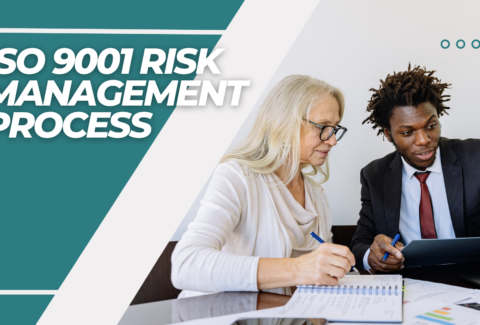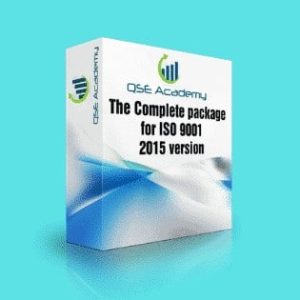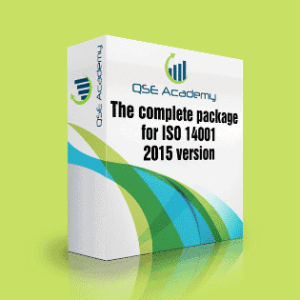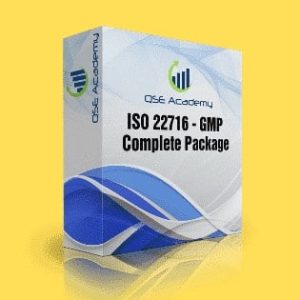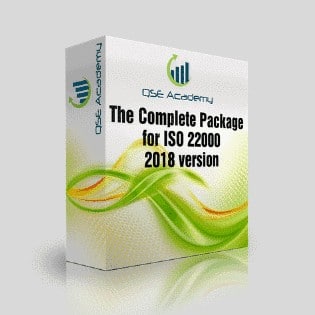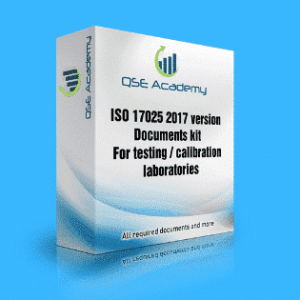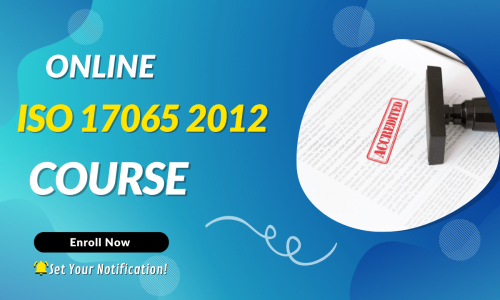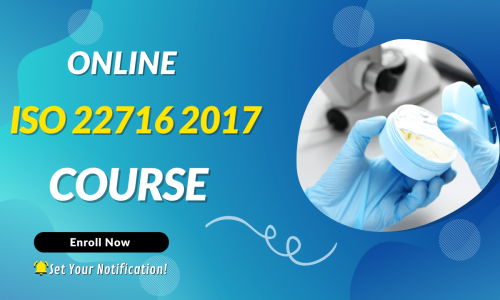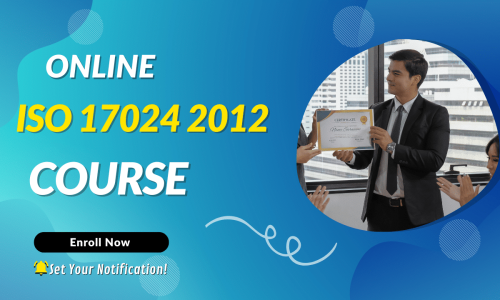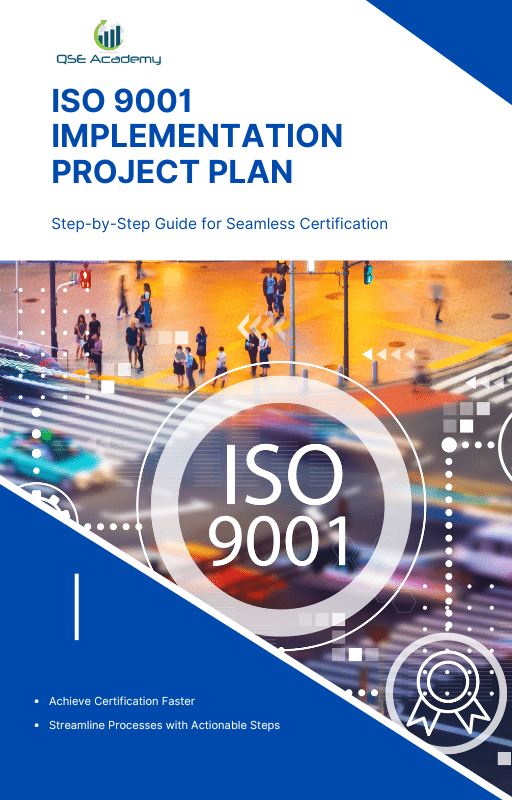What is the meaning of ISO 9001 2015?
What is the meaning of ISO 9001 2015?
If you’ve ever heard about ISO 9001:2015 and thought, “What does that actually mean?”—you’re not alone! Many people see it as just another industry standard, but the meaning of ISO 9001 2015 goes way beyond a simple certification. It’s all about helping businesses deliver consistent quality, improve efficiency, and keep customers happy.
ISO 9001:2015 is the latest version of the internationally recognized ISO 9001 standard for quality management systems (QMS). The “2015” in the name refers to the year this version was released, bringing in important updates to keep businesses aligned with modern challenges. But why does it matter? Because organizations that follow ISO 9001:2015 aren’t just checking boxes—they’re actively working to improve processes, reduce risks, and deliver better products and services.
In this article, we’ll explore the meaning of ISO 9001 2015, what sets it apart from previous versions, and why it’s such an important tool for businesses of all sizes. Whether you’re a business owner, a quality manager, or just someone curious about how companies ensure top-notch quality, you’re in the right place. Let’s break it down in a way that makes sense—without the complicated jargon!
Understanding the Meaning of ISO 9001:2015
Now that we’ve set the stage, let’s dive deeper into the meaning of ISO 9001 2015. What exactly does it stand for, and why is it such a big deal for businesses around the world? Let’s break it down.
What Does ISO 9001:2015 Stand For?
To truly understand the meaning of ISO 9001 2015, it helps to look at its name piece by piece:
- ISO – This stands for the International Organization for Standardization, a global body that develops standards to ensure consistency, efficiency, and quality across industries.
- 9001 – This is the specific standard within the ISO 9000 family that focuses on quality management systems (QMS). It provides a framework for organizations to follow in order to deliver high-quality products and services.
- 2015 – This refers to the most recent revision of the standard, which was released in 2015. ISO standards are reviewed and updated periodically to keep them relevant to modern business practices.
So, in simple terms, the meaning of ISO 9001 2015 is that it’s a globally recognized standard that helps businesses manage quality, improve efficiency, and satisfy customers—updated to meet today’s business needs.
Why the 2015 Version Matters
If ISO 9001 has been around for a while, you might be wondering, “Why does the 2015 version matter? What changed?” Great question! The 2015 update brought some major improvements that made the standard more adaptable and relevant for businesses of all sizes.
Here are some of the biggest changes in ISO 9001:2015:
✅ A stronger focus on risk-based thinking – Instead of just following a checklist, businesses must actively identify and manage risks that could impact quality.
✅ More emphasis on leadership – Top management now plays a bigger role in ensuring that quality is a priority throughout the entire organization.
✅ A simplified structure – The new format makes it easier to integrate ISO 9001 with other management standards, such as ISO 14001 for environmental management.
✅ A greater focus on customer satisfaction – Businesses must now ensure they’re consistently meeting customer needs and expectations.
These updates make ISO 9001:2015 more flexible, practical, and valuable for businesses in today’s fast-moving world.
At its core, the meaning of ISO 9001 2015 is all about helping businesses build a culture of quality and continuous improvement. Whether you run a small startup or a global corporation, this standard provides a proven framework for success.
In the next section, we’ll explore the key principles behind ISO 9001:2015 and how they shape the way businesses approach quality management. Let’s keep going!
Key Principles Behind ISO 9001:2015
Now that we understand the meaning of ISO 9001 2015, let’s take a look at the core principles that make this standard so effective. ISO 9001:2015 isn’t just a set of rules—it’s built on seven key quality management principles that help businesses create a strong foundation for success. These principles guide organizations in making smart, customer-focused decisions that lead to continuous improvement.
1. Customer Focus: Quality Starts with the Customer
At the heart of ISO 9001:2015 is customer satisfaction. After all, what’s the point of a business if it doesn’t meet customer needs? The meaning of ISO 9001 2015 revolves around ensuring that customers receive consistent, high-quality products and services.
Businesses that follow this principle:
✅ Listen to customer feedback and use it to improve
✅ Aim to exceed customer expectations, not just meet them
✅ Build long-term customer relationships based on trust
By focusing on quality from the customer’s perspective, businesses can stand out in competitive markets and build a loyal customer base.
2. Leadership: Driving Quality from the Top Down
A strong quality management system (QMS) starts with strong leadership. ISO 9001:2015 puts greater emphasis on top management’s role in driving quality across the organization.
Good leaders don’t just set goals—they actively:
✅ Create a culture where quality is a shared responsibility
✅ Ensure employees have the resources and training they need
✅ Lead by example, showing that quality matters at every level
When leadership is fully engaged, the meaning of ISO 9001 2015 becomes more than just a standard—it becomes a mindset that shapes the entire organization.
3. Engagement of People: Everyone Has a Role in Quality
ISO 9001:2015 recognizes that employees play a huge role in quality management. Businesses can’t rely on just a few people to uphold standards—quality needs to be a team effort.
Organizations that embrace this principle:
✅ Empower employees by involving them in decision-making
✅ Provide ongoing training and development
✅ Encourage collaboration across departments
When employees feel engaged and valued, they become active contributors to quality improvement.
4. Process Approach: Streamlining Operations for Better Results
Instead of viewing tasks in isolation, ISO 9001:2015 encourages businesses to see the bigger picture. Processes work best when they are connected and flow smoothly from one stage to the next.
For example, think about a restaurant:
- Taking an order, preparing the meal, serving the customer, and handling payment are all connected processes.
- If one step fails (like incorrect food preparation), the whole experience suffers.
The meaning of ISO 9001 2015 emphasizes understanding, managing, and optimizing processes to create a seamless system that ensures quality at every step.
5. Improvement: A Culture of Constant Growth
One of the biggest advantages of ISO 9001:2015 is that it doesn’t let businesses stay stagnant. Instead, it pushes them to always look for ways to improve.
Businesses that commit to continual improvement:
✅ Identify weaknesses and fix them before they become bigger problems
✅ Innovate and adapt to new market trends
✅ Keep refining processes to increase efficiency and reduce waste
The meaning of ISO 9001 2015 is not about maintaining the status quo—it’s about continuous progress.
6. Evidence-Based Decision Making: Let the Data Lead the Way
ISO 9001:2015 encourages businesses to base decisions on facts, not assumptions. Instead of relying on guesswork, companies are urged to:
✅ Collect and analyze data on customer satisfaction, product performance, and internal processes
✅ Use measurable insights to make improvements
✅ Continuously monitor progress and adjust strategies when needed
When businesses use real data to drive their decisions, they make smarter choices that lead to long-term success.
7. Relationship Management: Strengthening Business Partnerships
No business operates alone. ISO 9001:2015 recognizes that strong relationships with suppliers, partners, and stakeholders contribute to overall quality.
Successful companies:
✅ Choose reliable suppliers and build strong partnerships
✅ Maintain open communication with customers and stakeholders
✅ Work collaboratively to create value for everyone involved
By managing relationships effectively, businesses can ensure consistency, trust, and long-term growth.
Why These Principles Matter
At its core, the meaning of ISO 9001 2015 is about building a smarter, more customer-focused, and efficient organization. These seven principles provide a clear roadmap to help businesses improve quality, reduce risks, and drive continuous success.
In the next section, we’ll dive deeper into the specific requirements of ISO 9001:2015 and how they shape quality management in real-world scenarios. Let’s keep going!
What Are the Core Requirements of ISO 9001:2015?
Now that we’ve covered the principles behind the standard, let’s get into the specific requirements that define the meaning of ISO 9001 2015. These requirements form the foundation of a quality management system (QMS) and help businesses stay organized, improve efficiency, and deliver consistent quality.
ISO 9001:2015 is structured around seven key clauses that businesses must follow to implement an effective QMS. Let’s break them down in a simple way!
1. Context of the Organization: Understanding Your Business Environment
Before a company can improve quality, it first needs to understand its internal and external environment. This means identifying:
✅ The needs and expectations of customers and stakeholders
✅ External factors like market trends, regulations, or competition
✅ Internal factors like company culture, resources, and current processes
By assessing these factors, businesses can build a QMS that aligns with their unique challenges and goals. This step ensures that the meaning of ISO 9001 2015 is relevant and applicable to each organization’s specific situation.
2. Leadership: Quality Starts at the Top
ISO 9001:2015 places a strong emphasis on leadership. Why? Because a quality-driven culture starts with engaged and committed management.
Leaders must:
✅ Set a clear vision for quality within the organization
✅ Make sure employees understand and follow quality policies
✅ Provide the resources and support needed to maintain high standards
A company’s leadership team must take an active role in making quality a priority, rather than leaving it to one department. The meaning of ISO 9001 2015 isn’t about assigning tasks—it’s about creating a culture where everyone cares about quality.
3. Planning: Risk-Based Thinking and Setting Goals
One of the biggest updates in ISO 9001:2015 is the focus on risk-based thinking. Instead of just reacting to problems, businesses must plan ahead and identify potential risks before they happen.
This section involves:
✅ Assessing risks and opportunities that could impact quality
✅ Setting measurable quality objectives (like improving customer satisfaction or reducing errors)
✅ Developing strategies to prevent problems and seize opportunities
The meaning of ISO 9001 2015 is all about proactive quality management—not just fixing mistakes, but preventing them in the first place.
4. Support: Providing the Right Resources for Success
Even the best quality management system won’t work if a company doesn’t have the right resources in place. This section ensures that businesses provide:
✅ Competent and well-trained employees who understand their roles
✅ Adequate tools, technology, and infrastructure to support quality processes
✅ Clear communication so that employees, suppliers, and customers are all aligned
The meaning of ISO 9001 2015 isn’t just about processes—it’s about equipping people with what they need to succeed.
5. Operation: Delivering Consistent Quality
This section is where the action happens! It covers everything related to how a company produces and delivers its products or services.
Businesses must:
✅ Clearly define and control processes to ensure consistency
✅ Identify and manage customer requirements to meet expectations
✅ Implement quality control measures to catch issues before they reach the customer
Think of this step as making sure the right product or service is delivered the right way—every time. The meaning of ISO 9001 2015 is about eliminating inconsistencies and ensuring reliability.
6. Performance Evaluation: Measuring and Improving Quality
You can’t improve what you don’t measure! This section ensures that businesses monitor their performance to make informed decisions.
This involves:
✅ Regularly reviewing key performance indicators (KPIs) to track progress
✅ Conducting internal audits to find areas for improvement
✅ Holding management reviews to assess how well the QMS is working
A business following ISO 9001:2015 isn’t just hoping things are going well—it’s constantly evaluating and fine-tuning processes to achieve better results.
7. Improvement: Continuous Growth and Innovation
The final clause is all about never settling for “good enough.” Businesses that truly embrace the meaning of ISO 9001 2015 are always looking for ways to improve.
This means:
✅ Learning from mistakes and taking corrective actions to prevent them from happening again
✅ Looking for new ways to enhance efficiency and customer satisfaction
✅ Encouraging a culture where everyone contributes to improvement
Continuous improvement isn’t just a requirement—it’s the mindset that makes ISO 9001:2015 so valuable.
Why These Requirements Matter
At its core, the meaning of ISO 9001 2015 is about creating a structured, efficient, and customer-focused business. These requirements help companies stay organized, improve operations, and build trust with customers.
In the next section, we’ll explore why businesses should adopt ISO 9001:2015 and how it can lead to long-term success. Let’s keep going!
Why Businesses Should Adopt ISO 9001:2015
By now, we’ve covered a lot about the meaning of ISO 9001 2015—what it is, how it works, and its key requirements. But here’s the big question: Why should businesses actually adopt it? What makes ISO 9001:2015 worth the effort?
The simple answer? Because it helps businesses succeed! Whether you’re running a small startup or a multinational corporation, ISO 9001:2015 can streamline operations, improve customer satisfaction, and give you a competitive edge. Let’s take a closer look at why so many organizations choose to implement this standard.
The Benefits of Implementing ISO 9001:2015
The meaning of ISO 9001 2015 goes beyond just having a quality certificate—it’s about real, measurable benefits that help businesses grow.
Here’s how adopting ISO 9001:2015 can make a difference:
✅ Better Efficiency – ISO 9001:2015 helps businesses organize processes, reduce waste, and eliminate inefficiencies. This means saving time, money, and resources while increasing productivity.
✅ Stronger Customer Trust – Customers feel more confident working with an ISO-certified company because it demonstrates a commitment to quality and consistency. It’s a great way to stand out from competitors.
✅ Fewer Mistakes and Errors – The risk-based approach of ISO 9001:2015 identifies potential problems before they happen, reducing costly errors and defects.
✅ Improved Employee Engagement – When employees understand their roles and responsibilities clearly, they feel more motivated and involved in the company’s success. A well-structured QMS encourages teamwork and accountability.
✅ Easier Compliance with Regulations – Many industries have strict regulatory requirements. ISO 9001:2015 aligns with many legal and industry standards, making compliance easier to achieve and maintain.
✅ A Culture of Continuous Improvement – ISO 9001:2015 isn’t just about getting certified once and forgetting about it—it’s about constantly refining and improving processes to stay competitive and relevant.
The meaning of ISO 9001 2015 isn’t about adding complexity to a business—it’s about making things simpler, more efficient, and more reliable.
Who Should Get ISO 9001:2015 Certified?
A common myth is that ISO 9001:2015 is only for big manufacturing companies, but that couldn’t be further from the truth! The meaning of ISO 9001 2015 is that it’s designed for businesses of all types and sizes—from service providers to small businesses to massive enterprises.
ISO 9001:2015 is especially useful for:
✅ Small businesses looking to build credibility – Certification helps smaller companies gain customer trust and compete with larger players.
✅ Manufacturers that need consistent quality control – ISO 9001:2015 ensures that products are produced to the same high standard every time.
✅ Service-based businesses – Whether you’re running an IT firm, a consulting agency, or a healthcare facility, ISO 9001:2015 helps improve customer satisfaction and operational efficiency.
✅ Companies aiming for international expansion – Many global organizations prefer working with ISO-certified suppliers and partners, making certification a great advantage for international growth.
How ISO 9001:2015 Gives Businesses a Competitive Edge
In today’s fast-changing world, businesses need every advantage they can get. The meaning of ISO 9001 2015 is not just about meeting requirements—it’s about setting yourself apart from the competition.
Here’s how ISO 9001:2015 helps businesses stay ahead:
🚀 It boosts brand reputation – An ISO-certified company is seen as more reliable, trustworthy, and professional.
🚀 It increases customer loyalty – Customers who know a business follows ISO 9001:2015 feel more confident in their purchases and are more likely to return.
🚀 It opens up new opportunities – Many industries and government contracts require suppliers to be ISO-certified, meaning businesses with certification can access bigger markets.
🚀 It prepares businesses for the future – The meaning of ISO 9001 2015 is all about continuous improvement, which helps companies stay innovative and adaptable.
Why ISO 9001:2015 Is Worth the Investment
While implementing ISO 9001:2015 requires effort, the long-term benefits far outweigh the costs. Companies that commit to ISO 9001:2015 operate more efficiently, build stronger customer relationships, and achieve greater success in their industries.
So, is ISO 9001:2015 worth it? Absolutely!
The meaning of ISO 9001 2015 isn’t just about compliance—it’s about creating a better, more structured, and more successful business.
In the next section, we’ll walk through the certification process and what businesses need to do to become ISO 9001:2015 certified. Let’s keep going!
The ISO 9001:2015 Certification Process
So, you understand the meaning of ISO 9001 2015 and why it’s valuable—now, how do businesses actually get certified? The good news is that while the process requires some effort, it’s completely manageable when broken down into clear steps.
Let’s walk through what it takes to achieve ISO 9001:2015 certification, step by step.
1. Understanding the Requirements
Before jumping into certification, it’s essential to fully understand what ISO 9001:2015 requires. Businesses should:
✅ Familiarize themselves with the ISO 9001:2015 standard and how it applies to their operations.
✅ Identify gaps between current processes and the requirements of ISO 9001:2015.
✅ Define quality objectives that align with their business goals.
The meaning of ISO 9001 2015 isn’t about changing everything overnight—it’s about building a system that improves quality step by step.
2. Developing a Quality Management System (QMS)
To meet the meaning of ISO 9001 2015, businesses need to create a structured Quality Management System (QMS). This system includes:
✅ Documenting processes – Clearly defining workflows and procedures.
✅ Setting quality objectives – Establishing measurable goals for improvement.
✅ Assigning responsibilities – Making sure everyone in the organization understands their role in maintaining quality.
A well-designed QMS acts as the backbone of ISO 9001:2015 compliance, ensuring that quality isn’t just a one-time effort but a long-term commitment.
3. Training Employees and Creating Awareness
ISO 9001:2015 isn’t just about leadership—it’s about involving the entire organization.
✅ Employees should be trained on ISO 9001:2015 principles and how their roles contribute to quality.
✅ A culture of continuous improvement and accountability should be encouraged.
✅ Everyone should understand that the meaning of ISO 9001 2015 is not just about getting certified—it’s about making real improvements.
When employees are engaged in the process, certification becomes a team effort rather than a management directive.
4. Conducting an Internal Audit
Before applying for certification, businesses should conduct an internal audit to check how well they’re meeting ISO 9001:2015 requirements.
✅ Identify strengths and areas for improvement.
✅ Fix any non-conformities (issues that don’t align with ISO 9001:2015).
✅ Make sure the QMS is fully functional and effective.
This step ensures that when the official certification audit happens, there are no surprises.
5. Undergoing an External Certification Audit
Once the internal audit is complete, it’s time for the official certification audit, conducted by an accredited third-party certification body.
🔍 Stage 1 Audit: The certification body reviews documentation and ensures the business is ready for a full assessment.
🔍 Stage 2 Audit: A detailed examination of processes, records, and overall compliance with ISO 9001:2015.
If everything meets the standard, congratulations! The company is officially ISO 9001:2015 certified.
But remember—certification isn’t the finish line; it’s the start of ongoing quality management.
6. Maintaining ISO 9001:2015 Compliance
The meaning of ISO 9001 2015 isn’t just about getting a certificate—it’s about continually improving processes.
✅ Businesses must conduct regular audits to ensure they stay compliant.
✅ Quality management should be a long-term strategy, not a one-time project.
✅ Employee training, customer feedback, and process reviews should be ongoing.
Companies that take ISO 9001:2015 seriously don’t just keep their certification—they see real improvements in efficiency, customer satisfaction, and business growth.
Why Getting Certified Is Worth It
While the certification process takes time and effort, the rewards are absolutely worth it. The meaning of ISO 9001 2015 is about helping businesses operate smarter, improve quality, and build stronger customer trust.
In the next section, we’ll tackle some common misconceptions about ISO 9001:2015 and clear up any confusion about what it really means. Let’s keep going!
Common Misconceptions About ISO 9001:2015
Now that we’ve covered the certification process, let’s take a moment to clear up some common misunderstandings. The meaning of ISO 9001 2015 is often misunderstood, leading to confusion about what the standard actually requires. Some people think it’s only for large corporations, while others believe it’s all about paperwork. Let’s set the record straight!
Misconception #1: ISO 9001:2015 Is Only for Big Companies
One of the biggest myths about the meaning of ISO 9001 2015 is that it only applies to large corporations or manufacturing giants. The truth? ISO 9001:2015 is designed for businesses of all sizes!
Whether you run a small family-owned bakery, a mid-sized tech startup, or a multinational enterprise, the principles of quality management apply to everyone. The standard is flexible, meaning each organization can tailor it to fit its own needs.
✅ Small businesses use ISO 9001:2015 to streamline operations and build customer trust.
✅ Service providers (like marketing agencies or IT companies) use it to improve client satisfaction.
✅ Nonprofits use it to ensure consistent service delivery.
ISO 9001:2015 isn’t about size—it’s about commitment to quality, no matter what kind of business you have.
Misconception #2: ISO 9001:2015 Is Just About Paperwork
Another common myth is that ISO 9001:2015 is just a bureaucratic system full of unnecessary paperwork. But here’s the reality:
✅ Yes, some documentation is required—but only what’s necessary to ensure smooth operations.
✅ The meaning of ISO 9001 2015 is about improving processes, not drowning businesses in paperwork.
✅ The focus is on practical quality management, not filling out forms for the sake of it.
If done correctly, ISO 9001:2015 actually reduces complexity by making processes clearer, not more confusing.
Misconception #3: Once Certified, the Work Is Done
Some businesses think that after achieving certification, they can just sit back and relax. But that’s not how ISO 9001:2015 works!
The meaning of ISO 9001 2015 is continuous improvement, meaning businesses must:
✅ Conduct regular internal audits to ensure they’re still meeting the standard.
✅ Look for new ways to improve efficiency and reduce errors.
✅ Keep employees engaged and trained in best practices.
ISO 9001:2015 isn’t a one-time task—it’s a long-term commitment to quality.
Misconception #4: ISO 9001:2015 Is Only for Manufacturing Companies
Because ISO 9001 originally gained popularity in manufacturing, many people assume it’s only useful for companies that produce physical products. But that’s not true at all! The meaning of ISO 9001 2015 applies to all industries, including:
✅ Healthcare – Hospitals and clinics use ISO 9001:2015 to improve patient care.
✅ Technology – Software companies implement ISO 9001:2015 to refine development processes.
✅ Education – Schools and universities use it to enhance student experiences.
✅ Hospitality – Hotels and restaurants apply ISO 9001:2015 to maintain service excellence.
Any organization that wants to improve processes, reduce waste, and increase customer satisfaction can benefit from ISO 9001:2015.
Setting the Record Straight
The meaning of ISO 9001 2015 is not about complex rules, excessive paperwork, or being exclusive to certain industries. It’s about creating a smarter, more efficient business that prioritizes quality at every level.
Now that we’ve cleared up these misconceptions, let’s take a look at how ISO 9001:2015 continues to evolve and what the future holds for quality management. Let’s keep going! 🚀
The Future of ISO 9001:2015 and Its Impact on Businesses
We’ve covered a lot about the meaning of ISO 9001 2015—what it is, how it works, and why it matters. But here’s another important question: What does the future look like for ISO 9001:2015? As businesses evolve, so do the standards they rely on to maintain quality and efficiency.
ISO 9001 has been updated several times since it was first introduced, and it will likely continue to adapt to new challenges, technologies, and customer expectations. Let’s explore what’s next for ISO 9001:2015 and why it remains a crucial tool for businesses in the years ahead.
How ISO 9001:2015 Continues to Evolve
One of the great things about ISO 9001:2015 is that it’s not a rigid set of rules—it’s a framework designed to adapt to change. Here are some ways ISO 9001:2015 is expected to evolve:
✅ Greater emphasis on digital transformation – As businesses move toward automation, AI, and data-driven decision-making, ISO 9001:2015 will continue to integrate modern technologies into quality management.
✅ More focus on sustainability – Environmental and social responsibility are becoming major business priorities. Future updates to ISO 9001 may include stronger requirements for sustainable practices.
✅ Stronger risk management approaches – The meaning of ISO 9001 2015 already includes risk-based thinking, but businesses will likely see enhanced strategies for identifying and mitigating risks in future revisions.
✅ Flexibility for remote and hybrid work models – As more companies embrace remote work, ISO 9001:2015 may adapt its guidelines to ensure quality management systems remain effective across different work environments.
ISO 9001:2015 isn’t just about meeting today’s business needs—it’s about preparing organizations for the future.
Why ISO 9001:2015 Still Matters in a Changing World
Some people wonder, “Is ISO 9001:2015 still relevant in today’s fast-moving business world?” The answer is a resounding YES! The meaning of ISO 9001 2015 is not just about compliance—it’s about long-term success.
Here’s why ISO 9001:2015 remains critical for businesses:
✅ It helps businesses stay adaptable – Markets, technologies, and customer needs are constantly changing. ISO 9001:2015 provides a structured approach to continuous improvement.
✅ It reinforces trust in an unpredictable world – With supply chain disruptions, economic shifts, and evolving customer expectations, companies need a strong foundation of quality and reliability.
✅ It prepares businesses for future challenges – Whether it’s automation, cybersecurity, or global competition, ISO 9001:2015 helps businesses stay ahead of the curve.
✅ It remains a global standard – As long as businesses strive for quality, efficiency, and customer satisfaction, the meaning of ISO 9001 2015 will continue to shape industries worldwide.
Looking Ahead: The Long-Term Value of ISO 9001:2015
While no one can predict exactly how ISO 9001 will evolve, one thing is certain: quality management will always matter. Companies that embrace ISO 9001:2015 now are setting themselves up for sustained success in the future.
The meaning of ISO 9001 2015 isn’t just about following rules—it’s about building a mindset of continuous improvement. As industries grow and technology advances, organizations that commit to quality will thrive in an ever-changing world.
In the next section, we’ll wrap up everything we’ve discussed and take a final look at why understanding the meaning of ISO 9001 2015 is a game-changer for businesses. Let’s bring it all together!
Conclusion: Why Understanding the Meaning of ISO 9001:2015 Matters
We’ve explored the ins and outs of ISO 9001:2015—what it is, how it works, why businesses should adopt it, and even where it’s headed in the future. But at the core of it all, the meaning of ISO 9001 2015 comes down to one simple thing: building a better, more efficient, and more customer-focused business.
ISO 9001:2015 isn’t just about getting a certification or following a set of rules. It’s about creating a culture of quality where businesses continually improve, reduce risks, and deliver consistent, high-value products and services.
Why ISO 9001:2015 Is More Than Just a Standard
At its heart, the meaning of ISO 9001 2015 is about helping businesses thrive. Here’s why it remains one of the most important standards in the world:
✅ It creates structure without unnecessary complexity – ISO 9001:2015 helps businesses streamline their processes without adding unnecessary red tape.
✅ It builds customer confidence – Companies that follow ISO 9001:2015 demonstrate reliability, professionalism, and a commitment to quality.
✅ It fosters long-term success – ISO 9001:2015 isn’t just about meeting today’s standards—it’s about adapting to change and staying competitive for the future.
✅ It’s for everyone – Whether you’re a small business, a growing startup, or a global corporation, the principles behind ISO 9001:2015 can help you improve and scale with confidence.
Final Thoughts: Is ISO 9001:2015 Right for Your Business?
If you’re wondering whether ISO 9001:2015 is worth implementing, the answer is yes—if you care about quality, efficiency, and customer satisfaction. The meaning of ISO 9001 2015 isn’t just about compliance; it’s about taking control of your business processes and making them work better for you.
So, what’s next?
If your business is ready to embrace ISO 9001:2015, start by learning more about the requirements, assessing your current processes, and taking the first steps toward certification. Whether you go for full certification or simply apply the principles to improve your operations, adopting ISO 9001:2015 is a decision that pays off in the long run.
Remember: quality isn’t just a goal—it’s a journey. And with ISO 9001:2015 as your guide, your business can achieve consistent success, customer trust, and lasting growth.
Looking for More Resources on ISO 9001?
Looking for ISO 9001 Resources Tailored to Your Industry?
If this article helped clarify ISO 9001, take the next step with our industry-focused tools designed to simplify your certification journey:
📦 ISO 9001 Documentation Kits by Industry: Whether you’re in manufacturing, construction, consulting, or healthcare — we have complete, ready-to-use documentation tailored for your sector.
🎓 Online ISO 9001 Training: Learn how to implement ISO 9001 effectively with our easy-to-follow video lessons, real-world examples, and practical exercises.
📋 ISO 9001 Checklist: Download our step-by-step checklist to ensure your QMS meets all the 9001:2015 requirements from start to finish.
These resources are crafted to save you time, reduce stress, and help you achieve certification with confidence. Choose your industry and start now!

make ISO standards less intimidating and more approachable for everyone.
Whether it’s ISO 9001, ISO 22000, or the cosmetics-focused ISO 22716,
I’ve spent my career turning complex jargon into clear, actionable steps
that businesses can actually use. I’m not here to call myself an expert—I prefer “enthusiast” because I truly love what I do.
There’s something incredibly rewarding about helping people navigate food safety and quality management systems
in a way that feels simple, practical, and even enjoyable.
When I’m not writing about standards, you’ll probably find me playing Piano 🎹, connecting with people, or diving into my next big project💫.
- I’m an engineer specialized in the food and agricultural industry
- I have a Master’s in QHSE management and over 12 years of experience as a Quality Manager
- I’ve helped more than 15 companies implement ISO 9001, ISO 22000, ISO 22716, GMP, and other standards
- My clients include food producers, cosmetics manufacturers, laboratories, and service companies
- I believe quality systems should be simple, useful, and efficient
- Outside of work, I play piano and love learning something new every day
Let’s make ISO less about stress and more about success! 🙏


